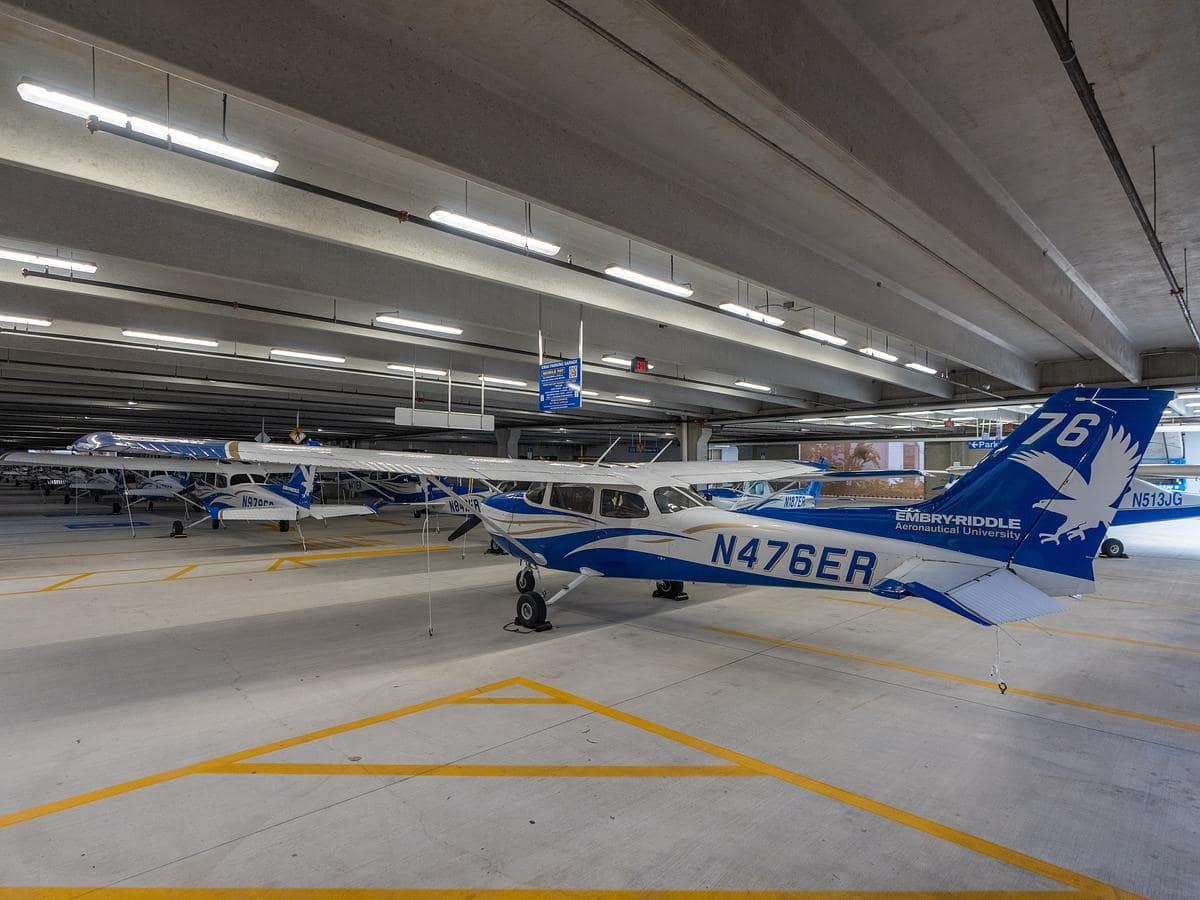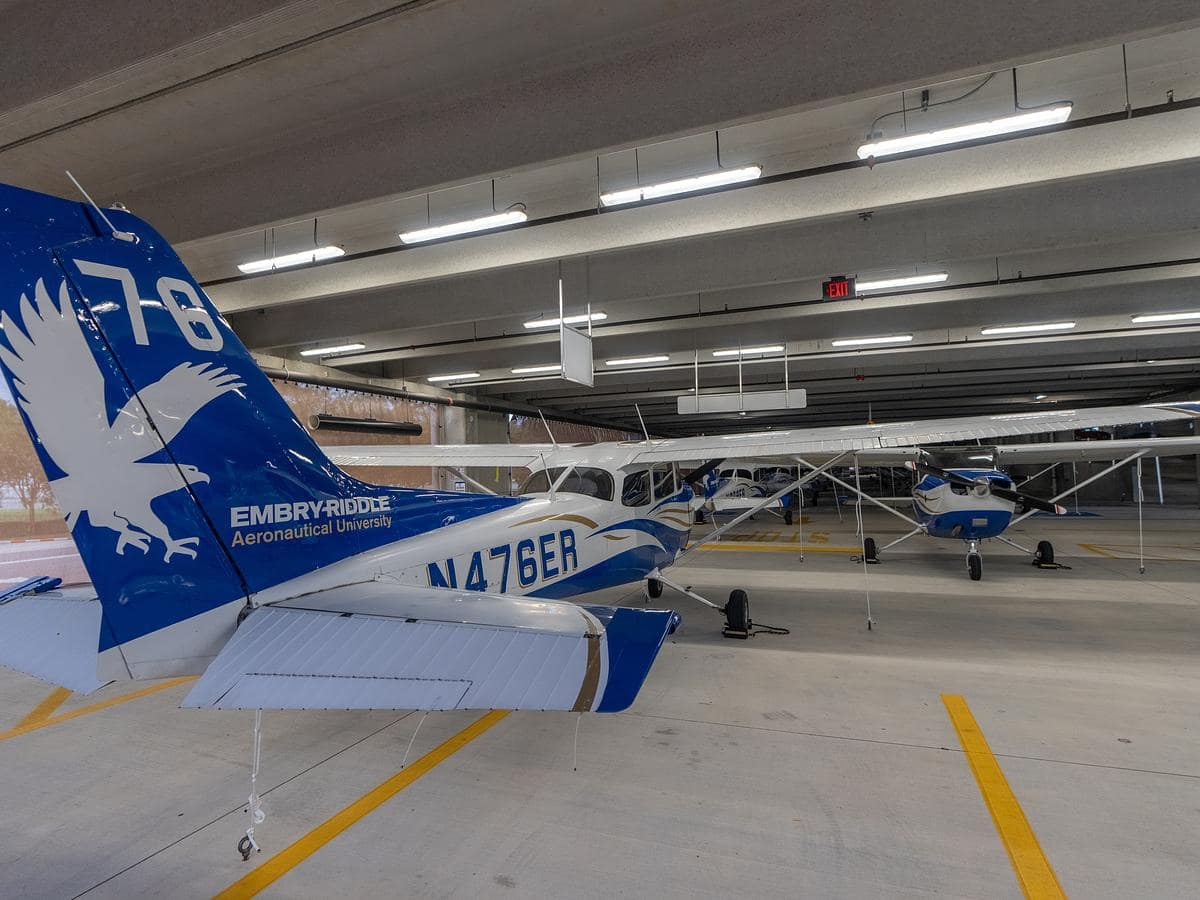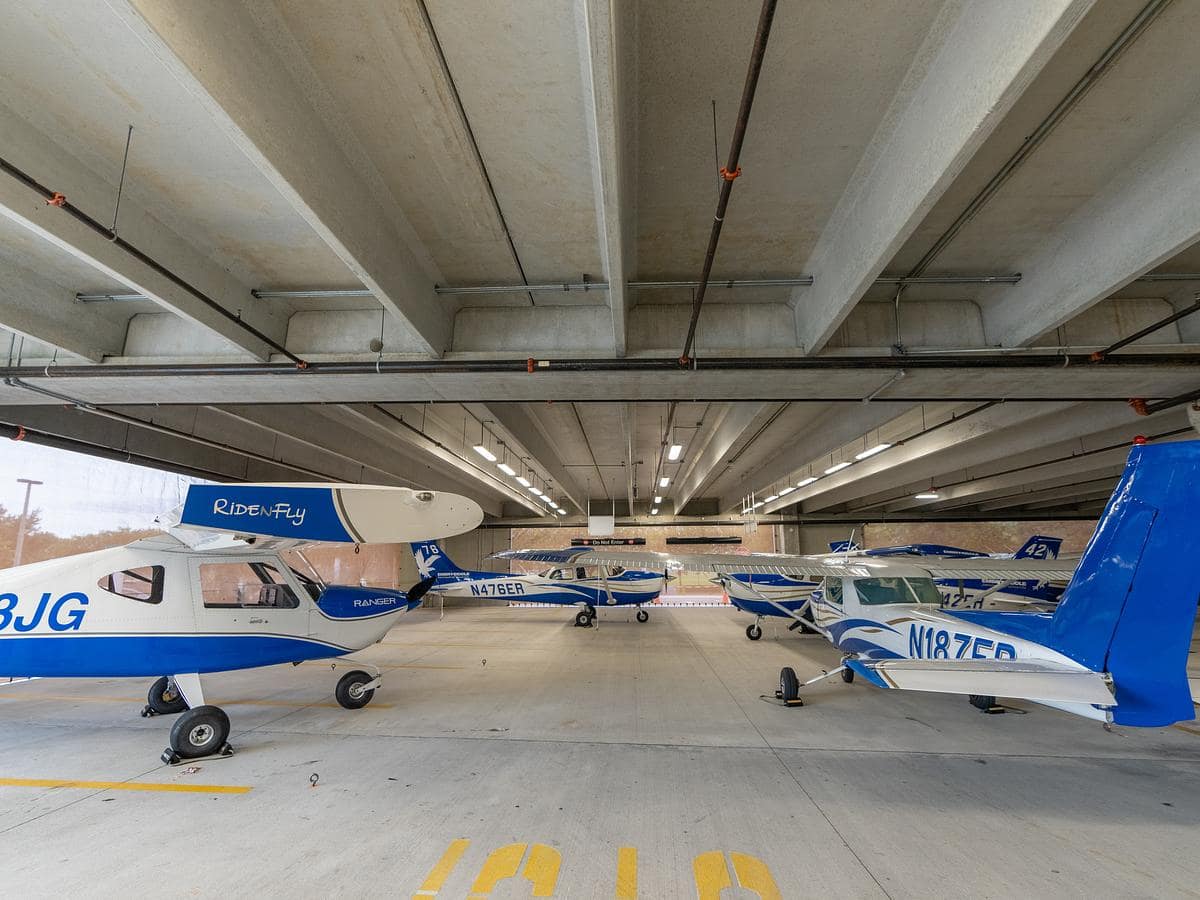Ahead of Storm, Embry-Riddle Parking Garage Is Transformed Into Plane Hangar




With Hurricane Helene expected to bring rain and high winds to Daytona Beach, Florida, Embry-Riddle Aeronautical University’s flight department transported and secured 33 aircraft on the ground floor of a three-story parking garage.
It was the first time that the garage on the Daytona Beach Campus had been used to secure a fleet of Cessna 172 single-engine planes — but it was not unanticipated. Its ground floor had undergone a redesign last year to allow for the safe storage of the aircraft during storms.
Preparation for housing the planes involved several steps. Facility personnel secured previously installed hurricane screening. From the nearby flight line, the aircraft were taxied to an adjoining gate. Mechanics and dispatchers then pushed and pulled the aircraft into the garage.
“We tested this operation last January,” said Dr. Ken Byrnes, chair of the Flight Department on the Daytona Beach Campus. “We implemented lessons learned from that test to ensure we could complete this operation with minimal disruption.”
The facilities team took about four hours to install the screening. About an hour and a half later, the flight personnel had the planes positioned and tied down in the garage.
“It went very well,” Byrnes said. “Thanks to a coordinated effort between campus safety, facilities and flight.”
In addition to securing the planes in the garage, Embry-Riddle sent aircraft to hangars at Daytona Beach and other local airfields in preparation for Hurricane Helene, which is expected to bring high winds and rain to the area.
While securing aircraft is important, Embry-Riddle’s top priority remains the safety of its students, staff and faculty. Embry‑Riddle officials have closed the Daytona Beach Campus today, and it is expected to reopen on Friday, Sept. 27.
Tempest Tracks Hurricane Helene
The garage was also outfitted on Wednesday with a TempestOne weather system, which includes sensors to measure and record wind speeds and other data in real-time. The data will be used to compare the winds inside and outside the garage.
The innovative system, which employs site-specific weather data and AI-driven modeling to deliver more accurate weather information, is a product of Weatherflow-Tempest, Inc., a partnering company at Embry-Riddle’s Research Park. TempestOne is a commercial suite of products and services that offers advanced capabilities and visualization tools for professionals in weather-sensitive industries.
“When the University reached out yesterday, Tempest was ready to respond. Thanks to the swift installation process and the wireless capabilities of our TempestOne systems, we were able to rapidly deliver real-time weather data through our APIs and visualization tools," said David St. John, Tempest co-founder and chief technology officer.
Along with commercial installations, Tempest has more than 80,000 systems deployed around the globe, many focused in and around coastal areas. As a public safety measure, the company provides open access to this data for named storms.
Embry‑Riddle Senior Vice President and Chief Operating Officer Rodney Cruise said that Embry-Riddle is pleased to partner with the team at WeatherFlow-Tempest “to employ this cutting-edge technology quickly during Hurricane Helene. The data we receive will give us valuable information during this storm and to prepare for future weather events.”
